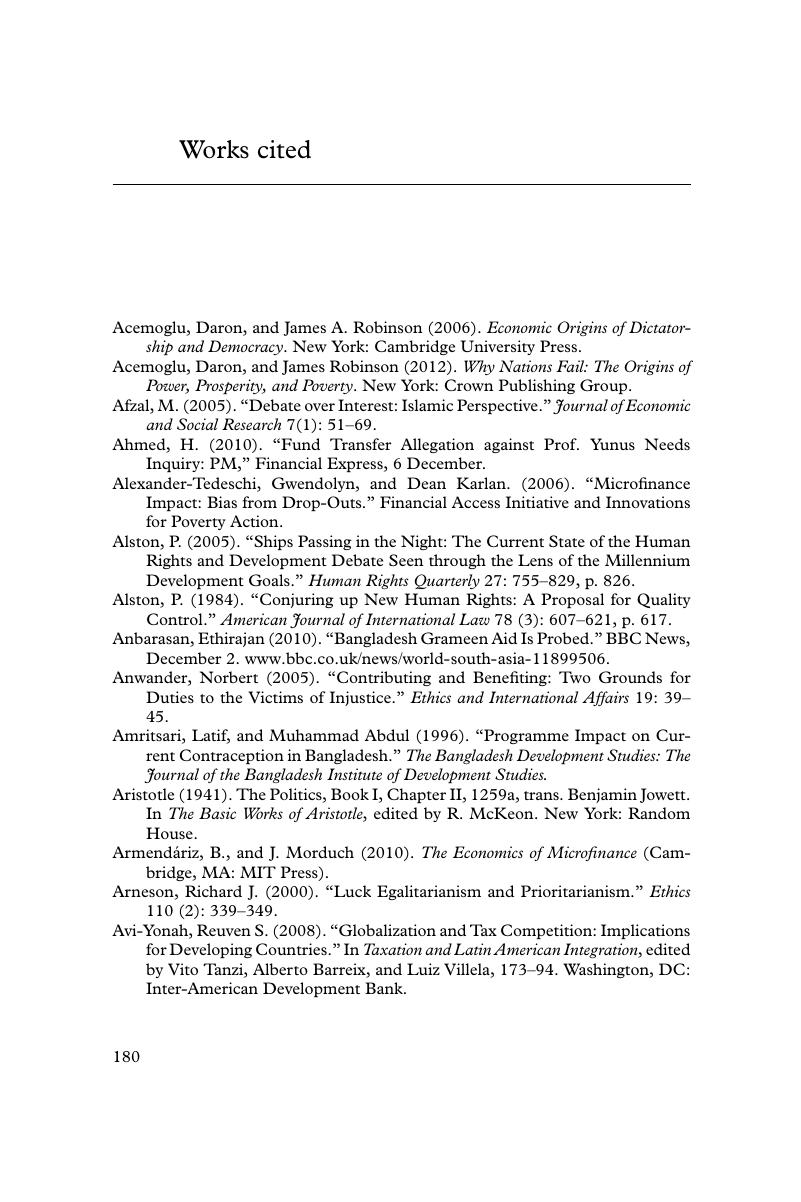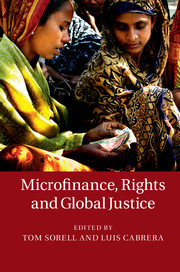Book contents
- Microfinance, Rights and Global Justice
- Microfinance, Rights and Global Justice
- Copyright page
- Contents
- Contributors
- Introduction: microfinance, rights and global justice
- 1 Credit is not a right
- 2 Is there ahuman right to microfinance?
- 3 Financial inclusion, education, and human rights
- 4 Microfinance, non-ideal theory, and global distributive justice
- 5 Microfinance, poverty relief, and political justice
- 6 Is exploitation permissible inmicrocredit?
- 7 What's wrong with exorbitantinterest rates on microloans?
- 8 Tensions between financial and organisationalsustainability: the problematic case of group-based microfinance and possible ways forward
- 9 Freedom and credit
- Works cited
- Index
- References
Works cited
Published online by Cambridge University Press: 05 August 2015
- Microfinance, Rights and Global Justice
- Microfinance, Rights and Global Justice
- Copyright page
- Contents
- Contributors
- Introduction: microfinance, rights and global justice
- 1 Credit is not a right
- 2 Is there ahuman right to microfinance?
- 3 Financial inclusion, education, and human rights
- 4 Microfinance, non-ideal theory, and global distributive justice
- 5 Microfinance, poverty relief, and political justice
- 6 Is exploitation permissible inmicrocredit?
- 7 What's wrong with exorbitantinterest rates on microloans?
- 8 Tensions between financial and organisationalsustainability: the problematic case of group-based microfinance and possible ways forward
- 9 Freedom and credit
- Works cited
- Index
- References
Summary

- Type
- Chapter
- Information
- Microfinance, Rights and Global Justice , pp. 180 - 191Publisher: Cambridge University PressPrint publication year: 2015

